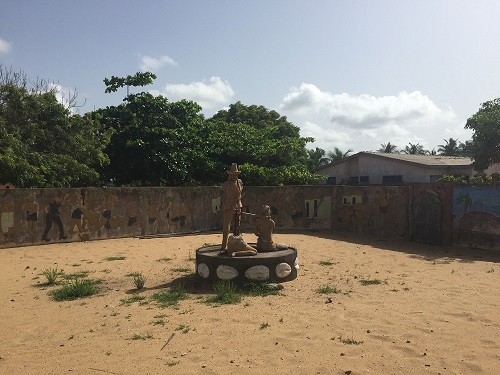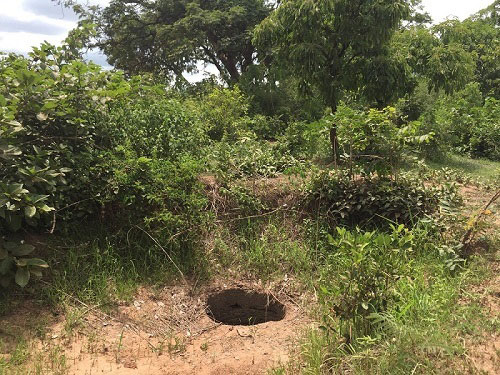University of Ghana, Phase 1 of the Antislavery Knowledge Network
Posted on 31 August 2018 by Mark Seyram Amenyo-Xa
Generating a framework of knowledge, the foundation stones upon which this knowledge network is to be built, commenced effectively in Ghana in April 2018 after several months of streamlining procedures, operations, logistics and financial requirements that were necessary for an effective take off. This work essentially is part of a pilot project that is being undertaken as a joint partnership between the University of Liverpool and the University of Ghana.
The journey, so far, has been as exciting and eventful as it has been revelatory and innovatory. The excitement is born largely out of the aims of this network and the desire to attain meaningful success. The indications of conceivable achievement of the set objectives of the project, very much indeed, spurred the team on.
The journey being revelatory manifests itself principally in the data that has thus far been collected with specific respect to the memories of people of indigenous and historical slavery and the material and intangible signatures that reflect, embody and represent these memories. It has been revelatory also in terms of the roles and legacies that some material relics of slavery play in the contemporary spiritual and religious affairs of some of the communities encountered. The adoption of rather unconventional but ethical and effective data collection techniques have been innovatory in all respects – the collection of data on contemporary forms of slavery as case in point.
The first field visits took the team to the southern parts of the Volta Region of Ghana. This region shares a boundary with Ghana’s eastern neighbour, the Republic of Togo to its east and the Gulf of Guinea to the south. The Brong Ahafo, Eastern and Greater Accra Regions, the Volta lake and the Volta River form its western frontiers whilst the Northern Region borders it on the north side. Over a period of three days, the towns and sites of the Atorkor slave market, Fort Prizenstein in Keta, the Agbomey site of Adina, and Adzidor and Bungalow sites, both of Hedzranawoe, were visited. Literature played a major role in the initial identification of sites to visit. However, once at these sites, interviews and discussions with key informants led to the discovery of other sites. The names, estate and legacies of some erstwhile slave merchants were documented as were attempts to classify the sites according to oral accounts gathered, into slave market, slave transit and slave holding sites.

This monument was erected in solemn memorial of the history of the site and the horrors of the slave trade
The team took the expedition further north into the Northern Region of Ghana – the largest of Ghana’s ten administrative regions. It shares borders with the Upper East and Upper West regions to its north. The Black Volta River forms a natural boundary between this region and the Brong Ahafo Region to its south while the Republic of Togo and la Cote d’Ivoire form its eastern and western frontiers respectively. The first point of call was the historic and popular town of Salaga as far as slavery heritage in Ghana is concerned. Salaga played host to a bustling slave market second to none in Ghana. Its influence was resounding as is indicative in the memories and relics documented. The settlements of Kpembi, and Bau, Shishipe and Grushi Zongo, that grew as slave resettlement towns were visited and geographically referenced. As was done in the Volta Region, perceptions, understandings and issues of contemporary slavery were gleaned and documented. Sites and features of Wakambayo and Rafi Anguluo were also visited and documented.

In the picture is a well dug through lateritic rock to provide water for refreshing and readying slaves for Salaga
The phenomena of exploitation and enslavement of people, young and old, are still a feature in some communities as revealed by the project. Ignorance, deception, abuse of power, lack of livelihood opportunities for the working age section of the population, and poverty, amongst others, are the factors that predispose and make people and communities vulnerable to contemporary slavery. This situation poses several challenges to socioeconomic development of these communities, not the least the situation wherein the section of local populations that could contribute meaningfully to strategies aimed at stimulating the growth of local economies are drawn into slavery in far away urban centres and beyond the borders of Ghana.
A few more visits are scheduled in these two regions for this initial phase of the project subsequent to which a mobile exhibition, which will initially be piloted at the University of Ghana, is to be rolled out in selected centres within the country. The exhibition will also highlight the development of an interactive database of sites visited.